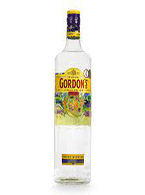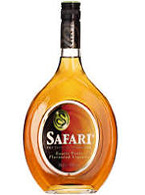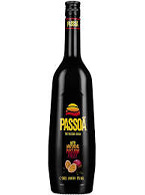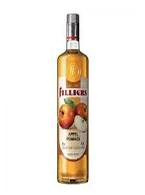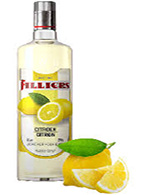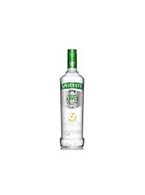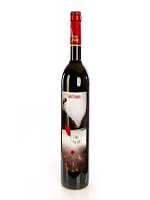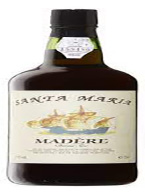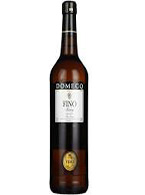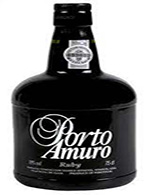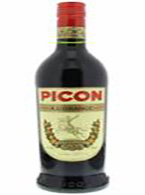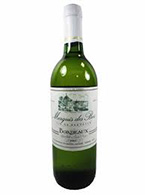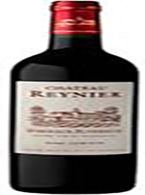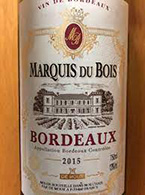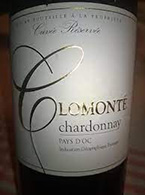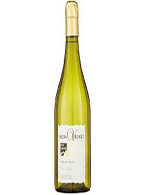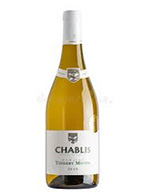alkohole
Showing 81–120 of 126 results
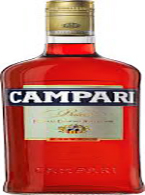
Campari
Campari is an Italian alcoholic liqueur, considered an apéritif, obtained from the infusion of herbs and fruit in alcohol and water. It is a bitters, characterised by its dark red colour
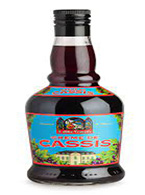
Creme de cassis
Gold Strike is a cinnamon liqueur containing gold snippets, produced by Lucas Bols. The company suggests it should be drunk as a shot, with the motto “Shake, Shoot and Strike”. It’s a clear liquid that tastes like cinnamon candy
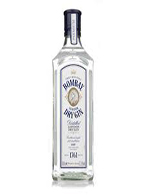
Bombay Dry Gin
Gin is a distilled alcoholic drink that derives its predominant flavour from juniper berries (Juniperus communis).
Gin originated as a medicinal liquor made by monks and alchemists across Europe, particularly in Southern France, Flanders and the Netherlands, to provide aqua vita from distillates of grapes and grains. It then became an object of commerce in the spirit industry. Gin emerged in England after the introduction of the jenever, a Dutch and Belgian liquor that was originally a medicine. Although this development had been taking place since the early 17th century, gin became widespread after the William of Orange-led 1688 Glorious Revolution and subsequent import restrictions on French brandy.
Gin today is produced in different ways from a wide range of herbal ingredients, giving rise to a number of distinct styles and brands. After juniper, gin tends to be flavoured with botanical/herbal, spice, floral or fruit-flavours or often a combination. It is most commonly consumed mixed with tonic water. Gin is also often used as a base spirit to produce flavoured gin-based liqueurs such as, for example, sloe gin, traditionally by the addition of fruit, flavourings and sugar.
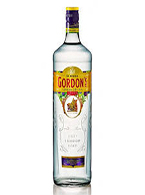
London Dry Gin
Gin is a distilled alcoholic drink that derives its predominant flavour from juniper berries (Juniperus communis).
Gin originated as a medicinal liquor made by monks and alchemists across Europe, particularly in Southern France, Flanders and the Netherlands, to provide aqua vita from distillates of grapes and grains. It then became an object of commerce in the spirit industry. Gin emerged in England after the introduction of the jenever, a Dutch and Belgian liquor that was originally a medicine. Although this development had been taking place since the early 17th century, gin became widespread after the William of Orange-led 1688 Glorious Revolution and subsequent import restrictions on French brandy.
Gin today is produced in different ways from a wide range of herbal ingredients, giving rise to a number of distinct styles and brands. After juniper, gin tends to be flavoured with botanical/herbal, spice, floral or fruit-flavours or often a combination. It is most commonly consumed mixed with tonic water. Gin is also often used as a base spirit to produce flavoured gin-based liqueurs such as, for example, sloe gin, traditionally by the addition of fruit, flavourings and sugar.
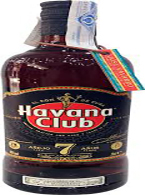
Havana 7 Years
Facundo Bacardí Massó, a Spanish wine merchant, was born in Sitges, Catalonia, Spain, in 1814, and emigrated to Santiago, Cuba in 1830. At the time, rum was cheaply made and not considered a refined drink, and rarely sold in upmarket taverns or purchased by the growing emerging middle class on the island. Facundo began attempting to "tame" rum by isolating a proprietary strain of yeast harvested from local sugar cane still used in Bacardi production today. This yeast gives Bacardi rum its flavour profile. After experimenting with several techniques for close to ten years, Facundo pioneered charcoal rum filtration, which removed impurities from his rum. Facundo then created two separate distillates that he could blend together, balancing a variety of flavors: Aguardiente (a robust, flavorful distillate) and Redestillado (a refined, delicate distillate). Once Facundo achieved the perfect balance of flavors by marrying the two distillates together, he purposefully aged the rum in white oak barrels to develop subtle flavors and characteristics while mellowing out those that were unwanted. The final product was the first clear, light-bodied and mixable "white" rum in the world.
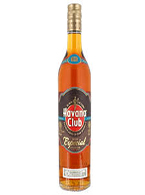
Havana Especial
Facundo Bacardí Massó, a Spanish wine merchant, was born in Sitges, Catalonia, Spain, in 1814, and emigrated to Santiago, Cuba in 1830. At the time, rum was cheaply made and not considered a refined drink, and rarely sold in upmarket taverns or purchased by the growing emerging middle class on the island. Facundo began attempting to "tame" rum by isolating a proprietary strain of yeast harvested from local sugar cane still used in Bacardi production today. This yeast gives Bacardi rum its flavour profile. After experimenting with several techniques for close to ten years, Facundo pioneered charcoal rum filtration, which removed impurities from his rum. Facundo then created two separate distillates that he could blend together, balancing a variety of flavors: Aguardiente (a robust, flavorful distillate) and Redestillado (a refined, delicate distillate). Once Facundo achieved the perfect balance of flavors by marrying the two distillates together, he purposefully aged the rum in white oak barrels to develop subtle flavors and characteristics while mellowing out those that were unwanted. The final product was the first clear, light-bodied and mixable "white" rum in the world.
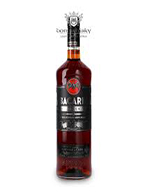
Bacardi Negro
Facundo Bacardí Massó, a Spanish wine merchant, was born in Sitges, Catalonia, Spain, in 1814, and emigrated to Santiago, Cuba in 1830. At the time, rum was cheaply made and not considered a refined drink, and rarely sold in upmarket taverns or purchased by the growing emerging middle class on the island. Facundo began attempting to "tame" rum by isolating a proprietary strain of yeast harvested from local sugar cane still used in Bacardi production today. This yeast gives Bacardi rum its flavour profile. After experimenting with several techniques for close to ten years, Facundo pioneered charcoal rum filtration, which removed impurities from his rum. Facundo then created two separate distillates that he could blend together, balancing a variety of flavors: Aguardiente (a robust, flavorful distillate) and Redestillado (a refined, delicate distillate). Once Facundo achieved the perfect balance of flavors by marrying the two distillates together, he purposefully aged the rum in white oak barrels to develop subtle flavors and characteristics while mellowing out those that were unwanted. The final product was the first clear, light-bodied and mixable "white" rum in the world.
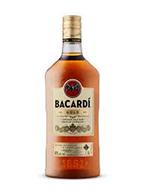
Bacardi Gold
Facundo Bacardí Massó, a Spanish wine merchant, was born in Sitges, Catalonia, Spain, in 1814, and emigrated to Santiago, Cuba in 1830. At the time, rum was cheaply made and not considered a refined drink, and rarely sold in upmarket taverns or purchased by the growing emerging middle class on the island. Facundo began attempting to "tame" rum by isolating a proprietary strain of yeast harvested from local sugar cane still used in Bacardi production today. This yeast gives Bacardi rum its flavour profile. After experimenting with several techniques for close to ten years, Facundo pioneered charcoal rum filtration, which removed impurities from his rum. Facundo then created two separate distillates that he could blend together, balancing a variety of flavors: Aguardiente (a robust, flavorful distillate) and Redestillado (a refined, delicate distillate). Once Facundo achieved the perfect balance of flavors by marrying the two distillates together, he purposefully aged the rum in white oak barrels to develop subtle flavors and characteristics while mellowing out those that were unwanted. The final product was the first clear, light-bodied and mixable "white" rum in the world.
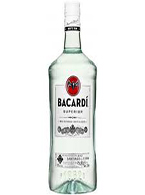
Bacardi White
Facundo Bacardí Massó, a Spanish wine merchant, was born in Sitges, Catalonia, Spain, in 1814, and emigrated to Santiago, Cuba in 1830. At the time, rum was cheaply made and not considered a refined drink, and rarely sold in upmarket taverns or purchased by the growing emerging middle class on the island. Facundo began attempting to "tame" rum by isolating a proprietary strain of yeast harvested from local sugar cane still used in Bacardi production today. This yeast gives Bacardi rum its flavour profile. After experimenting with several techniques for close to ten years, Facundo pioneered charcoal rum filtration, which removed impurities from his rum. Facundo then created two separate distillates that he could blend together, balancing a variety of flavors: Aguardiente (a robust, flavorful distillate) and Redestillado (a refined, delicate distillate). Once Facundo achieved the perfect balance of flavors by marrying the two distillates together, he purposefully aged the rum in white oak barrels to develop subtle flavors and characteristics while mellowing out those that were unwanted. The final product was the first clear, light-bodied and mixable "white" rum in the world.
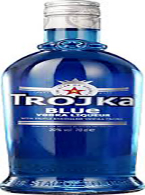
Trojka Blue
This is a list of brands of vodka. Vodka is a distilled beverage composed primarily of water and ethanol, sometimes with traces of impurities and flavorings. Vodka is made by the distillation of fermented substances such as grains, potatoes, or sometimes fruits or sugar. The classic preparation is performed using grain or potatoes, The grains or potatoes based vodka has a neutral flavor profile.
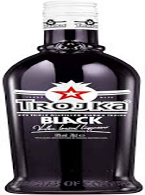
Trojka Pink
This is a list of brands of vodka. Vodka is a distilled beverage composed primarily of water and ethanol, sometimes with traces of impurities and flavorings. Vodka is made by the distillation of fermented substances such as grains, potatoes, or sometimes fruits or sugar. The classic preparation is performed using grain or potatoes, The grains or potatoes based vodka has a neutral flavor profile.
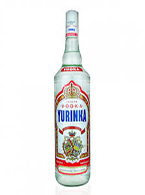
Zaranoff
Zaranoff is a brand of vodka, sold mainly by ALDI in Germany, Belgium and Denmark. It is manufactured by a company called Rückforth GMBH in Rottenburg. When tested by Swedish authorities, while performing tests on illegally imported alcohol, Zaranoff proved to have a lower than stated content of alcohol.
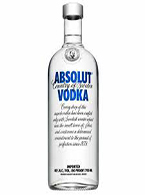
Absolut
Absolut Vodka is a brand of vodka, produced near Åhus, in southern Sweden. Absolut is a part of the French group Pernod Ricard. Pernod Ricard bought Absolut for €5.63 billion in 2008 from the Swedish state. Absolut is one of the largest brands of spirits in the world (after Smirnoff, Bacardi) and is sold in 126 countries.
Absolut practices a One Source production philosophy, meaning that all of their production takes place in and around the village of Åhus, Sweden. The water and wheat are both sourced only from the village. Absolut uses CO2 neutral distillation (carbon emissions offset by planting trees that absorb CO2 over their lifetime).
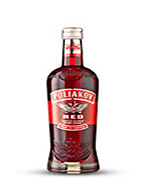
Poliakov Red
Poliakov is a French vodka brand, owned by La Martiniquaise, France's second-largest spirits group, founded in 1934, by the father of the current head, the billionaire Jean-Pierre Poliakov is a "millionaire" brand, selling in excess of one million nine-litre cases per annum.
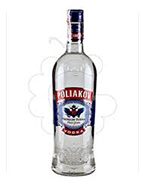
Polikov
Poliakov is a French vodka brand, owned by La Martiniquaise, France's second-largest spirits group, founded in 1934, by the father of the current head, the billionaire Jean-Pierre Poliakov is a "millionaire" brand, selling in excess of one million nine-litre cases per annum.
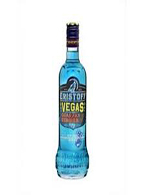
Blue Eristoff
Eristoff Vodka (air-wrist-off) originated from Georgia and was first created for Prince Eristavi of Duchy of Racha in 1806.
Made from 100% grain spirit, Eristoff vodka is triple distilled and then charcoal filtered, a technique first established in 18th century Russia.
The Eristoff logo of a wolf howling at a crescent moon represents the Persian name for Georgia, Gorjestan, meaning "land of the wolf". Today, Georgia is still home to the grey wolf, which for hundreds of years has been a part of Georgian culture and folklore.
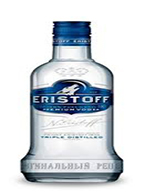
Eristoff Vodka (air-wrist-off) originated from Georgia and was first created for Prince Eristavi of Duchy of Racha in 1806.
Made from 100% grain spirit, Eristoff vodka is triple distilled and then charcoal filtered, a technique first established in 18th century Russia.
The Eristoff logo of a wolf howling at a crescent moon represents the Persian name for Georgia, Gorjestan, meaning "land of the wolf". Today, Georgia is still home to the grey wolf, which for hundreds of years has been a part of Georgian culture and folklore.
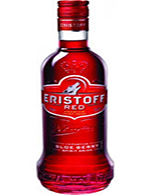
Red Eristoff
Eristoff Vodka (air-wrist-off) originated from Georgia and was first created for Prince Eristavi of Duchy of Racha in 1806.
Made from 100% grain spirit, Eristoff vodka is triple distilled and then charcoal filtered, a technique first established in 18th century Russia.
The Eristoff logo of a wolf howling at a crescent moon represents the Persian name for Georgia, Gorjestan, meaning "land of the wolf". Today, Georgia is still home to the grey wolf, which for hundreds of years has been a part of Georgian culture and folklore.
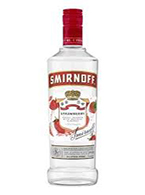
Smirnoff
Smirnoff is a brand of vodka owned and produced by the British company Diageo. The Smirnoff brand began with a vodka distillery founded in Moscow by Pyotr Arsenievich Smirnov (1831–1898). It is now distributed in 130 countries and produced in several countries including Argentina, Albania, Brazil, Honduras, India, Ireland, Italy, Latvia, Mongolia, the Philippines, the United Kingdom and the United States . Smirnoff products include vodka, flavoured vodka, and malt beverages. In March 2006, Diageo North America said that Smirnoff vodka was the best-selling distilled spirit brand in the world. In 2015 India's Officer's Choice overtook Smirnoff vodka to become the world's largest selling spirit brand. In 2014, Smirnoff was the best selling vodka across the world.
The vodka is made using a traditional charcoal filtration method developed by P. A. Smirnov. Recipe No. 21 was created by Smirnov's son Vladimir after escaping Russia during the October Revolution.
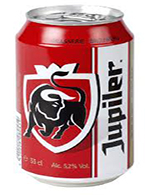
Jupilier
Beer is one of the oldest and most widely consumedalcoholic drinks in the world, and the third most popular drink overall after water and tea. Beer is brewed from cereal grains—most commonly from malted barley, though wheat, maize (corn), and rice are also used. During the brewing process, fermentation of the starch sugars in the wort produces ethanol and carbonation in the resulting beer.
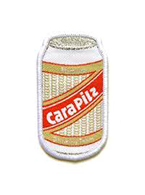
Cara
Beer is one of the oldest and most widely consumedalcoholic drinks in the world, and the third most popular drink overall after water and tea. Beer is brewed from cereal grains—most commonly from malted barley, though wheat, maize (corn), and rice are also used. During the brewing process, fermentation of the starch sugars in the wort produces ethanol and carbonation in the resulting beer.
